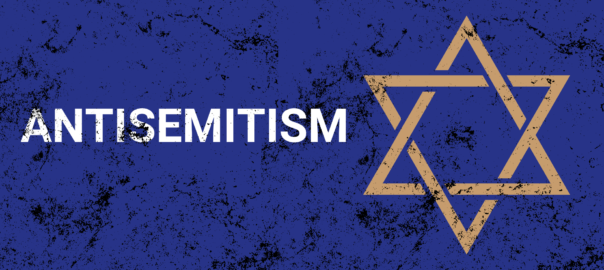The examples of genocide or individual cases of hate crimes are rather recent episodes and mainly concern the re-emergence of attitudes of racism and xenophobia. Among the phenomena of hostility and aggression towards ‘others’, anti-Semitism is a particular phenomenon that has been growing in recent years throughout Europe. It is in fact an ancient hatred, the ‘longest’ in the history of mankind, expressed towards Jews as such (or as Jean-Paul Sartre already observed, often even in the absence of Jews), but which today takes on new faces and characters depending on the social, cultural, and political context in which we live. Especially in the period around 27 January each year, Remembrance Day, there are punctual acts of anti-Semitism, even in Italy.
The depiction of the Stars of David or swastikas on the doors of the houses of deportees and partisans, offensive and anti-Semitic writing in front of schools and so on, are examples. Among the aspects that characterize recent forms of anti-Semitism is its increasing and worrying spread online alongside the now numerous expressions of hate speech. Hate crimes are crimes defined by a legal system, motivated by prejudice based on a specific characteristic of the victim. Hate speech, on the other hand, is the instigation, promotion or incitement to denigrate, hate or defame a person or a group of people based on grounds such as ‘race’, colour, religion, or sex. The second aspect concerns the actors involved in these phenomena: victims, perpetrators, judges and narrators. Specifically, the actions of organized groups of a discriminatory, racist or sexist nature, the random and unstructured interventions of ordinary citizens who attack personalized targets, the communication of individuals or groups who strike ‘for fun’, provocateurs who act ‘for fun or defiance’ (trolls), ideologues of violence or terrorism, but also some influencers, conspiracy theorists, and not least politicians and journalists. With recent crises and the emergence of collective trauma, hate crimes and new forms of anti-Semitism have also manifested themselves in political discourse and the digital environment, due to the public and interactive nature of new information technologies. The situation has become complicated in the hyper-digitalized global world, fuelled by forms of symbolic violence, information-disinformation flows and ‘pseudo-events’ that tribalize minds and social behaviour. So-called neo-Anti-Semitism highlights the problem of identity in the multicultural society, of understanding the Other and (its) history, and severely undermines the relationship between the public sphere and networked society: Jews, due to their singular history of diaspora, have always brought out the dialectic between the particular and the universal in the eyes of the world (Castells 2009; Taguieff 2015). This condition has further ‘stretched’ hatred in societies, in particular anti-Semitic sentiment combined with conspiracy. With the beginning of the summer of 2020 and following the first announcements of a possible anti-Covid-19 vaccine in October-November, published news, especially through posts shared on platforms, started to circulate mixing different contents such as health and institutional information and racist acts against public figures of Jewish origin, or false information about possible cures against the virus and related conspiracy theories.
Pseudo-news often accompanied by the names of leaders of religious groups or pseudo-scientists, all victims or perpetrators of the so-called ‘Great Reset’, the name of one of the theories spread online about the future of the post-Covid world and the control of strong powers. In this specific case, the formats of the content disseminated by some users were audio messages, photographs and videos, produced in the first case with the sole purpose of instilling doubt on the real existence of the virus and its dangerousness, in the second, trying (desperately) to create counter-narratives based on recognized scientific theses, put forward by virologists or so-called experts, ‘web stars’ now almost devoid of credibility. The impression is that newspapers are turning into mere letterboxes, where those most skilled in managing social communication and internal conflict have freedom of speech, often without any verification (Sorrentino, 2015). Since video and photos are also considered as effective languages in the journalistic world, much of this news has been, and still is, shared online solely in this format, as textual content, giving voice to ‘experts’ or ‘conspiracists’. As noted by sociologist Deborah Lupton, digital media played an important role during the emergency by supporting relationships and gestures of solidarity; however, it also facilitated the massive dissemination of fake news often characterized by angry and/or conspiracy-type narratives. “In order not to forget”, even in this recently arrived 2023, dialogue and collaboration between institutions, citizens and communication operators, remain fundamental operational and responsible acts to start enriching the mutual contact between cultures and foresee/avoid any future (traumatic) attempt of removal.

